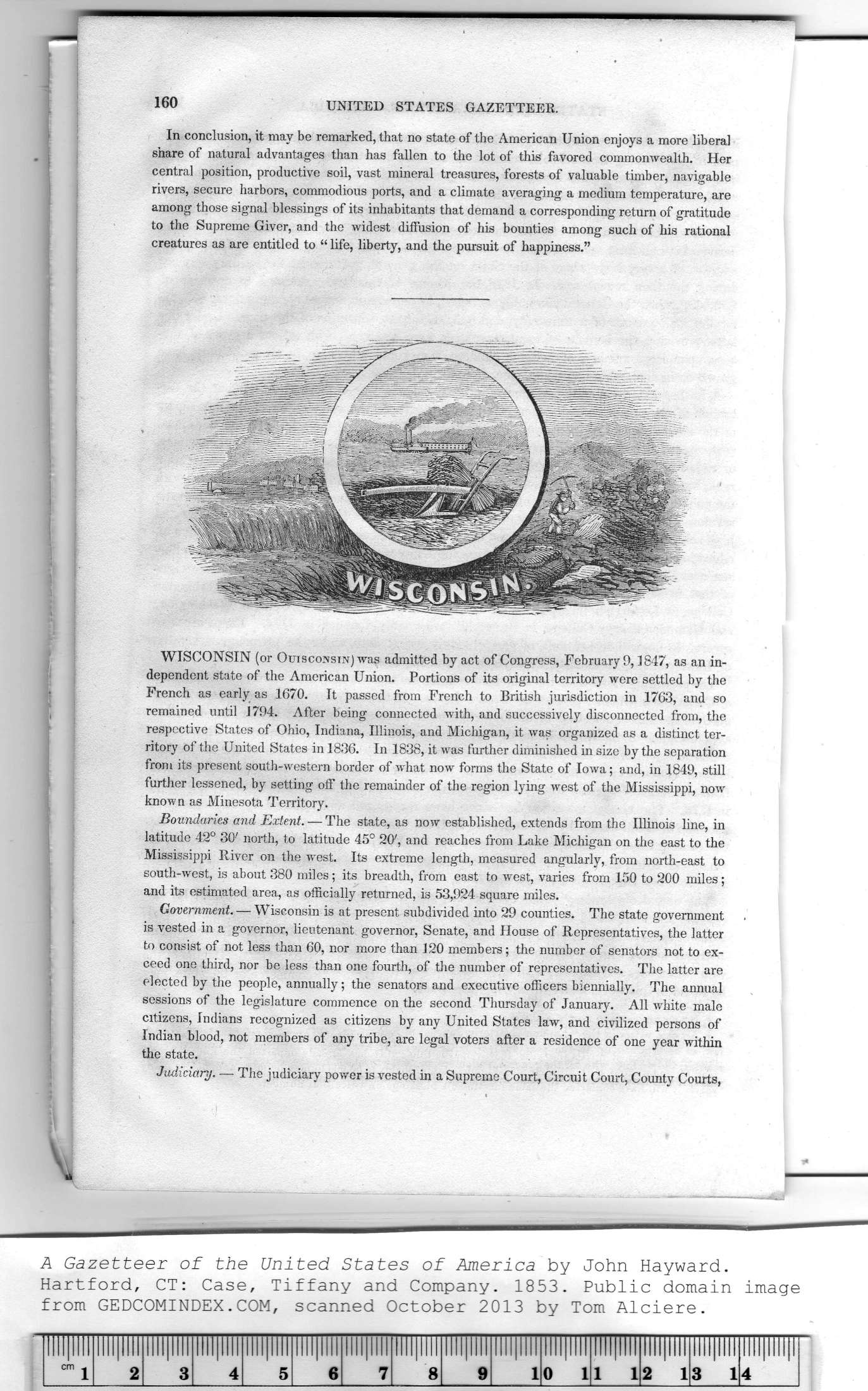|
|
Note: Ctrl and + increases the font size of the text below, Ctrl and - decreases it, and Ctrl and 0 resets it to default size.
160 UNITED STATES GAZETTEER.
t ! In conclusion, it may be remarked, that no state of the American Union enjoys a more libera]
| share of natural advantages than has fallen to the lot of this favored commonwealth. Her
central position, productive soil, vast mineral treasures, forests of valuable timber, navigable
j rivers, secure harbors, commodious ports, and a climate averaging a medium temperature, are
among those signal blessings of its inhabitants that demand a corresponding return of gratitude
to the Supreme Giver, and the widest diffusion of his bounties among such of his rational
creatures as are entitled to “ life, liberty, and the pursuit of happiness."
WISCONSIN (or Ouisconsin) was admitted by act of Congress, February 9, J 847, as an in-
dependent state of the American Union. Portions of its original territory were settled by the
French as early as 1670. It passed from French to British jurisdiction in 1763, and so
remained until J794. After being connected with, and successively disconnected from, the
respective States of Ohio, Indiana, Illinois, and Michigan, it was organized as a distinct ter-
ritory of the United States in 1836. In 1838, it was further diminished in size by the separation
from its present south-western border of what now forms the State of Iowa; and, in 1849, still
further lessened, by setting off the remainder of the region lying west of the Mississippi, now
known as Minesota Territory.
Boundaries and Extent. — The state, as now established, extends from the Illinois line, in
latitude 42° 30' north, to latitude 45° 20', and reaches from Lake Michigan on the east to the
Mississippi River on the west. Its extreme length, measured angularly, from north-east to
south-west, is about 380 miles ; its breadth, from east to west, varies from 150 to 200 miles;
and its estimated area, as officially returned, is 53,924 square miles.
Government. — Wisconsin is at present subdivided into 29 counties. The state government
is vested in a governor, lieutenant governor, Senate, and House of Representatives, the latter
to consist of not less than 60, nor more than 120 members; the number of senators not to ex-
ceed one third, nor be less than one fourth, of the number of representatives. The latter are
elected by the people, annually; the senators and executive officers biennially. The annual
sessions of the legislature commence on the second Thursday of January. All white male
citizens, Indians recognized as citizens by any United States law, and civilized persons of
Indian blood, not members of any tribe, are legal voters after a residence of one year within
the state.
Judiciary. — The judiciary power is vested in a Supreme Court, Circuit Court, County Courts,
|
lllllllll |
lllllllll |
lllllllll |
lllllllll |
llll llll |
llll|llll |
llll|llll |
llll|llll |
lllllllll |
llll llll |
lllllllll |
lllllllll |
lllllllll |
lllllllll |
|
cm j |
2 |
3 |
4 |
5 |
6 |
7 |
8 |
9 |
1 |
0 1 |
1 1 |
2 1 |
GO
>-* |
|
